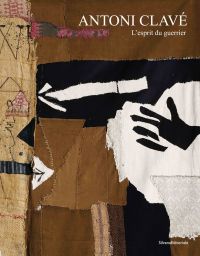
Antoni Clavé – ACP – Palazzo Franchetti, Italy
22 Apr — 23 Oct 2022
Antoni Clavé
The Spirit of the warrior
ACP – Palazzo Franchetti, Venice, 22 April – 23 October 2022
on the occasion of the
59th International Art Exhibition – La Biennale di Venezia
Antoni Clavé (Barcelona, Spain, 1913 – Saint-Tropez, France, 2005) is an artist whose work provides one of the most successful and original examples of how to bridge the divide between figuration and abstraction. He returns to Venice, a city that already saw the reaffirmation and consecration of his international success in 1984 with the dedication of the entire Spanish pavilion to his work. This year, again on the occasion of the Venice Biennale, the artist will be the subject of an important exhibition at the prestigious Palazzo Franchetti. Organized by ACP – Art Capital Partners, together with the Antoni Clavé Archives, the show – curated by Aude Hendgen, art historian and head of the Antoni Clavé Archives and Sitor Senghor, an independent curator – consists of about fifty works; paintings and sculptures, including large formats, that explore the theme of the Warrior, one of the artist’s most important recurring subjects. In its understanding of the clear influence of the imagery of statuary and African masks, the exhibition will then be hosted from 23 March to 27 May 2023 at the Donwahi Foundation in Abidjan.
As with Jean Dubuffet and Massimo Campigli, the Palazzo Franchetti confirms its interest in 20th century artists with a particular link to the city of the Doges in presenting an exhibition of the work of Antoni Clavé (1913-2005) for the 59th edition of the Venice Biennale.
Using the filter of the theme of the warrior, the exhibition reveals the research of the great Spanish master through the evolution of his style. The warrior is, for Clavé, an essential and recurring theme. It appears early on in his art and by 1958 holds a dominant place in his paintings, going on to acquire substance and volume, populating his sculptures. The warrior follows the successful series of Kings that dominated the artist’s imagination in the 1950s, thus continuing the choice of ancient figures, the last heirs of a lost civilization that are transformed into the powerful archetypes of his Spanish heritage.
The paintings date from 1958 to the 1990s, including some of the major works that were already exhibited in the Venice Biennale in 1984.
The sculptures, which also include the famous “armoires”, reveal Clavé’s love for materials that are as heterogeneous as possible – including wood, metal, cardboard and objects recovered from the junkyard.
The theme is surely connected to the artist’s own life. Born in Barcelona in 1913, Antoni Clavé was first confronted by war as early as 1937 and subsequently by the defeat of the Republican army and his own exile and incarceration. The theme of the warrior is present in his art early on, beginning with the drawings he made in the camps; By 1957, his reputation is such that for his exhibition at the Beyeler gallery in Basel, it was Jean Cassou, chief curator of the Musée National d’Art Moderne of Paris at the time, who signed the catalogue. But it was the exhibition organized by the Galerie Creuzevault in Paris in 1958 that marked a turning point in Clavé’s artistic career and public recognition. His subject matter was clear: Kings and Warriors, transformed, transmuted even, as Pierre Daix once described them, by the technique of assemblage.
The theme of the fighter held a place of privilege, especially in relation to the statuary and African masks with which he surrounded himself in his Paris studio; his first bronze sculptures of 1960 represent warriors. Warriors are also seen in the object-assemblages, the “armoires” and on a monumental scale, they are the subjects that stand alongside the kings in the “tapisseries- assemblages.” The exhibition at Palazzo Franchetti takes a new look at the art of Antoni Clavé through the prism of his memories of African masks.
In 1978, Antoni Clavé was one of the first contemporary artists to exhibit at the Musée National d’Art Moderne – Centre Georges Pompidou in Paris. In 1980, he was commissioned to create a large mural for the Barajas airport in Madrid. The artwork was monumental (3 x 9 m) but the true recognition by his native Spain took place in 1984, when the Spanish pavilion of the 41st Venice Biennale was devoted to his work. In the paintings of Antoni Clavé, the theme of warriors surpassed abstraction. The masks done in collage, the silhouettes and other barely sketched characters are all soldiers, invading over decades of the artist’s works. In addition, there are the everpresent collages of creased paper, embossed or stamped, the foldings and unfoldings, and the optical illusions.
The exhibition “Spirit of the warrior” will then be hosted from 23 March to 27 May 2023 at the Donwahi Foundation in Abidjan. It will be an unprecedented voyage of the modern Catalan to a land rich in century-old traditions of proud warriors, reminiscent of the African Middle-Ages (1190- 1255). An extraordinary journey to the source of inspiration, similar to Jean-Michel Basquiat’s mystical return to Korhogo in 1986. Bringing the art of Antoni Clavé to the Ivory Coast with this unique exhibition will allow for a new appreciation of his work, renewing a dialogue begun in the 1960s by the artist himself.
Please log-in or create an account to see your recent items.